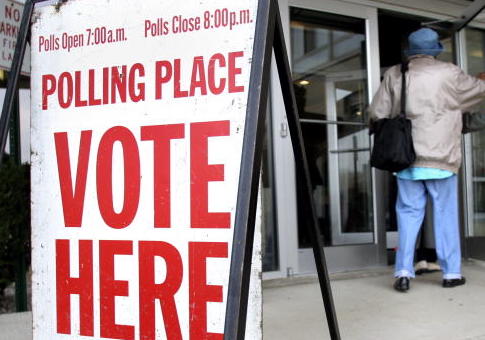Strict voter ID laws do not suppress turnout, a new paper finds, regardless of sex, race, Hispanic identity, or party affiliation.
Requiring photo ID to vote is a hotly contested subject in American political discourse. Proponents argue that it is necessary to insure against fraud and preserve the integrity of the American electoral system. Opponents argue that it will disenfranchise otherwise eligible voters—many of whom would be poor and of color—who are unable to easily obtain ID.
In total, 10 states, ranging from Georgia to Wisconsin, require voters to show ID in order to vote. Seven of those states require a photo ID, and three do not. An additional 25 states "request" that voters display ID, but may still permit them to vote on a provision ballot if they cannot. The remaining states "use other methods to verify the identity of voters," according to the National Conference of State Legislatures.
The new research, from an economics professor at the University of Bologna and another at Harvard Business School, indicates that "strict" voting laws of the type implemented in those ten states do not have a statistically significant effect on voter turnout.
To determine this, the professors took advantage of different timing of the implementation of voter ID laws in different states to construct a "difference-in-differences" analysis, looking at how voters behave in states that do and do not have strict voter ID laws, before and after those laws were implemented. They used data from the progressive data service Catalist, "a U.S. company that provides data and data-related services to progressive organizations and has a long history of collaborating with academics."
The data from Catalist contained both demographic information—age, sex, race, and party affiliation—as well as information on whether or not a surveyed person was actually registered. This means that the paper’s authors could test whether or not voter ID not only stopped registered voters from voting, but discouraged unregistered voters from registering.
"Strict ID laws have no significant negative effect on registration or turnout, overall or for any subgroup defined by age, gender, race, or party affiliation," the paper's authors found.
"Most importantly," they write, strict ID laws "do not decrease the participation of ethnic minorities relative to whites. The laws' overall effects remain close to zero and non-significant whether the election is a midterm or presidential election, and whether the laws are the more restrictive type that stipulate photo IDs."
The paper does note that one possible explanation for this effect is, paradoxically, that voter ID laws might goose turnout among certain marginalized groups. This, the authors argue, is because a perceived "attack" on a right (e.g., the right to vote) can mobilize voters who would otherwise fail to turn out.
To measure this possibility, the paper aggregates data on measures of political participation beyond voting: donating to a candidate, putting up a campaign sign, or volunteering for a campaign (all measured by the Cooperative Congressional Election Survey). They find that there is no statistically significant impact of voter ID laws on any of these actions, which provides evidence against—although does not fully falsify—the "backlash" theory.
At the same time, the study's authors use the same data to examine the actual effect of strict voter ID laws on voter fraud itself, and similarly find no statistically significant effect. Using two datasets of voter fraud cases (which represent a cumulative 2,000 proven or hypothesized events over eight years), the study examines the relationship between laws and frequency of measured voter fraud, finding no evidence of a change after implementation.
This finding is naturally limited by the extremely small number of voter fraud cases actually identified: fewer than one per million people per year. It is possible that voter ID laws would be more effective suppressing fraud in a context where it was more evidently prevalent; as is, the authors estimate that the laws themselves only cover about 0.3 to 0.1 offenses per million people per year.
In total, then, the paper suggests that voter ID laws are not suppressive, but also that they do not have much of an impact on elections overall.
"Our results suggest that efforts both to safeguard electoral integrity and enfranchise more voters may be better served through other reforms," it concludes.
